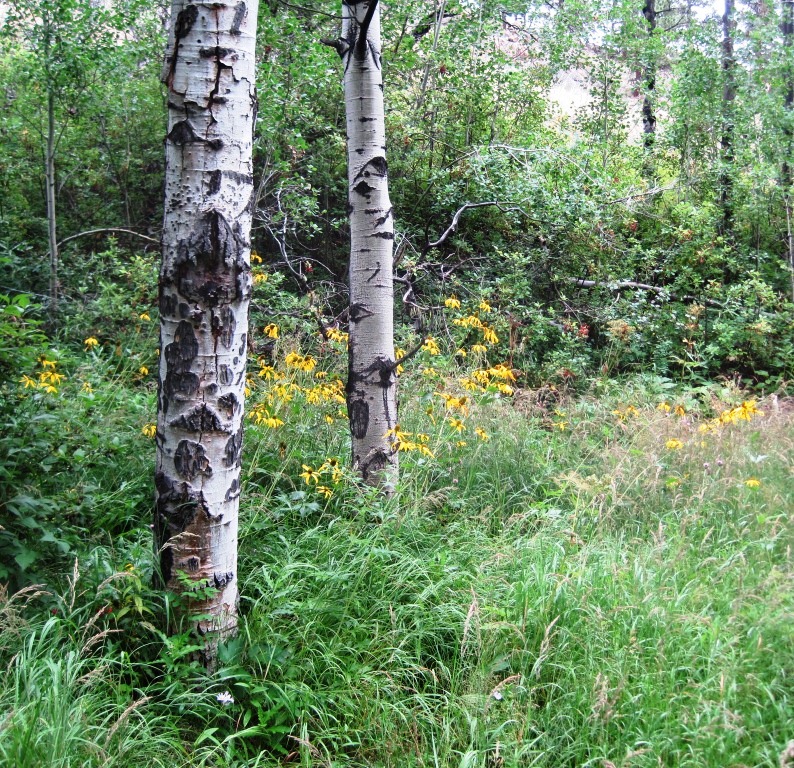
Gary Snyder Bio
by Denise Jarrott
The relentless complexity of the world is off to the side of the trail. For hunters and herders trails weren’t always so useful. For a forager, the path is not where you walk for long. Wild herbs, camas bulbs, quail, dye plants, are away from the path. The whole range of items that fulfill your needs is out there. We must wander through it to learn and memorize the field-rolling, crinkled, eroded, gullied, ridged (wrinkled like the brain) – holding the map in mind. ~From the essay “On the Path, Off the Trail” by Gary Snyder
Very few poets capture and engage with their landscape, both their physical and spiritual homes, like Gary Snyder. From the fog-shrouded Cascade Mountains of his home landscape of the Pacific Rim to the mysterious resonance of Japan, Snyder inhabits and converses with his world, and invites the reader to make a home in the world he both reflects and creates.
Gary Snyder is known among the Beat-generation and San Francisco Renaissance poets of the 1950s and 60s, alongside Allen Ginsberg, Jack Kerouac, Lawrence Ferlinghetti, and other voices of their time. Those familiar with Jack Kerouac’s novel The Dharma Bums will recognize Snyder as one of the characters, according to Kerouac, an “old-fashioned saint of the desert”, but also an anarchist, a poet steeped in the natural world of his native Pacific Northwest and adopted Far East.
Born in San Francisco and raised in and around Portland and Seattle, Snyder was immersed in the natural world from a very young age. Following a severe burn accident as a child that involved a significant time in bed and unable to work on his family farm, Snyder’s mother a “very high-strung, neurotic person with literary ambitions” brought him books from the Seattle library, and from that early literary influence, Snyder continued to read and write and question the influence of white society on the local native cultures and subsequently, the natural world he had, and would, come to know.
Snyder later attended Reed College in Portland, Oregon, but did not venture far from his beloved wilderness. He held jobs as a logger, seaman, and fire lookout for the U.S. Forest Service. In addition to degrees in literature and anthropology, Snyder also studied linguistics at Indiana University and Oriental languages at the University of California at Berkeley. It was in Bay Area that Snyder became involved with the poets who would define Beat poetry.
Flowing from his work on the trail crew at Yosemite National Park and involvement and practice in Zen Buddhism in Japan and India, Snyder began to write the poems he would be known for. His first book, Riprap and his translation of the poems of Han Shan, or Cold Mountain, were his first notable works in poetry. He is currently the author of sixteen collections of poetry including the Pulitzer Prize-winning Turtle Island.
In addition to being an award-winning poet and translator, Snyder has also written several books nonfiction and essays such as Earth House Hold and The Old Ways. Currently, he teaches at the University of California at Davis, where he has been on faculty since 1985. He has also held positions as a visiting lecturer at several universities and facilitated several writing workshops and was the former chair of the California Arts Council.
Gary Snyder will read from his poems at the University Center for the Arts on Wednesday September 17 at 7:30 pm.
Bio Bibliography:
Aronowitz, Al, Everyday Beat, excepted from Chapter 14: The Dharma Bum http://www.everyday-beat.org/everyday/essay/snyder/ accessed online, September 8, 2014.
Gary Snyder biography: The Poetry Foundation http://www.poetryfoundation.org/bio/gary-snyder
Snyder, Gary, “On the Path, Off the Trail” from The Practice of the Wild North Point Press, 1990.
Weinberger, Eliot, “The Art of Poetry No. 74”, Gary Snyder interviewed by Eliot Weinberger, http://www.theparisreview.org/interviews/1323/the-art-of-poetry-no-74-gary-snyder
